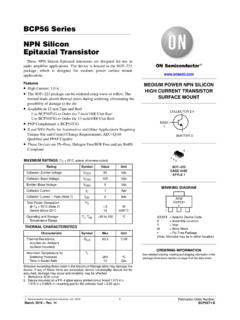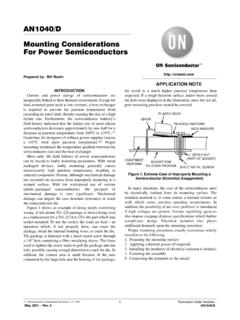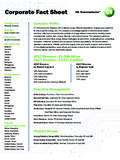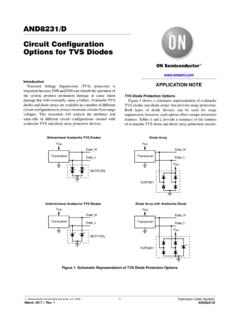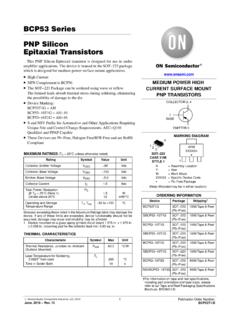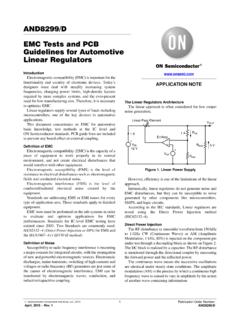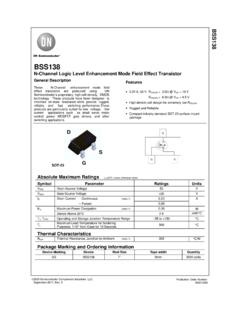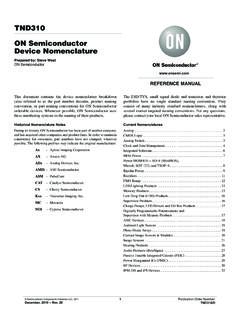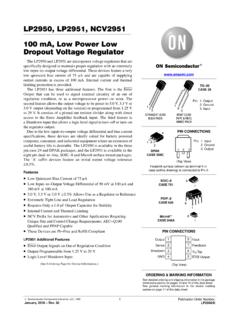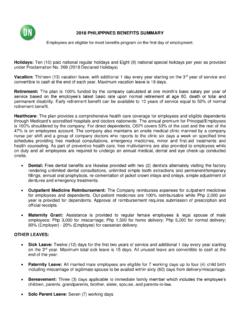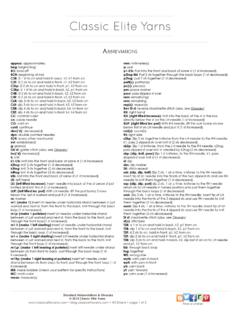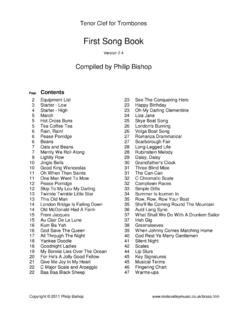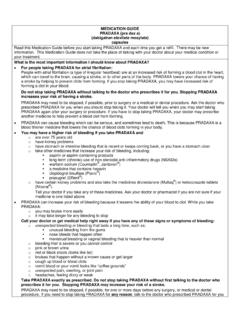Transcription of NCP1256 - Low Power Offline PWM Current Mode …
1 Semiconductor Components Industries, LLC, 2015 January, 2019 Rev. 51 Publication Order Number: NCP1256 /DNCP1256 Low Power Offline PWMC urrent Mode Controllerwith Brown-Out ProtectionThe NCP1256 includes everything to build cost effective switchmode Power supplies ranging from a few watts up to several tens ofwatts. Housed in a tiny TSOP 6 package, the part can be supplied upto 30 V. It hosts a jittered 65 or 100 kHz switching circuitry operatedin peak Current mode control. When the Power in the secondary sidestarts decreasing, the controller automatically folds back its switchingfrequency down to a minimum level of 26 kHz. As the Power furthergoes down, the part enters skip cycle while freezing the peak comes with several protection features such as atimer based auto recovery short circuit protection, lossless OPP, andan easily adjustable Brown Out (BO) pin. Two inputs are provided tolatch off the part in a practical way, for instance with OVP and OTPevents.
2 Several options exists to chose latch or auto recovery for Fixed frequency 65 kHz or 100 kHz Current mode ControlOperation Adjustable Over Power Protection (OPP) Circuit, Disabled at LowLine Adjustable Brown Out Level Frequency Foldback down to 26 kHz and Skip cycle in Light LoadConditions Internally fixed Slope Compensation Ramp Internally fixed 4 ms Soft start 70 ms Timer based Auto recovery Short circuit Protection Frequency Jittering in Normal and Frequency Foldback Modes Double Hiccup Auto recovery Short circuit Protection Pre short Ready for Latched OCP Option Latched/Auto Recovery OVP Protection on Vcc Latched Inputs for Improved Robustness (OVP and OTPimplementations) Auto Recovery ac Line OVP Protection (E Version) +500 mA/ 500 mA Source/Sink Drive Capability EPS Compliant These are Pb Free DevicesTypical Applications Ac dc Adapters for Portable Devices, Computers, Tablets etc. Auxiliary Power SuppliesPIN CONNECTIONS13 CSGND2BO4 DRV6(Top View)5 VCCTSOP 6 CASE 318 GSTYLE 13 MARKING (Note: Microdot may be in either location)16xxAYWGG16xx= Specific Device Codex= A, E or 2A= Assembly LocationY= YearW= Work WeekG= Pb Free PackageSee detailed ordering and shipping information in the packagedimensions section on page 23 of this data 1.
3 Typical Application Example Latched OVP on 2. Typical Application Example OVP is Latched on 3. Typical Application Example OVP is Latched on Vcc, OTP Latched on CSTable 1. PIN DESCRIPTIONSPin NoPin NameFunctionPin Description1 GND The controller pinHooking an optocoupler collector to this pin will allow the BO levelLatch inputA voltage below the programmed level stops the controller. Whenabove, the controller can start. When the pin is brought V for four consecutive clock cycles, the part latches off. Withthe E version, an auto recovery ac line OVP is available throughthis sense + OPP adjustmentLatch inputThis pin monitors the primary peak Current but also offers ameans to introduce over Power compensation. When the pin isbrought above V during the off time, the part permanentlylatches the controller protects the ICThis pin is connected to an external auxiliary voltage. An OVPcomparator monitors this pin and offers a means to latch the con-verter in fault outputThe driver s output to an external MOSFET 2.
4 OPTIONSC ontrollerFrequencyOCPOVP on BOOVP/OTPCSOVPVccNCP1256 ASN65T1G65 kHzLatchedLatchedLatchedLatchedNCP1256 BSN65T1G65 kHzAuto recoveryLatchedLatchedLatchedNCP1256 ASN100T1G100 kHzLatchedLatchedLatchedLatchedNCP1256 BSN100T1G100 kHzAuto recoveryLatchedLatchedLatchedNCP1256 ESN65T1G65 kHzAuto recoveryAuto recoveryAuto recoveryAuto and logicmanagementVddpoweron resetLEB1vdd/ 34 msSSPower onresetGNDCSFB1 us timeconstantFrequencyfoldbackVskipVlatch 1 VfoldSRQQC lampUp counter4doublehiccupRSTE ventgone?peak currentfreezeVFB < V ? setpoint = 250 mVUVLOBOVBO1 VBO2 BOVOVP20 usIpflag = 1 if over Current > start timer > auto rec.+invertslope compensationvddOPPGMIOPPLLV latch2 RFBV alidatedduring off time (option)ICSOPre shortLatched OCP(option)UVLO?checked atPON onlylatched OCP < VfoldF Iopp3 = 0 VFB > VoppF Iopp3 = I1I2=0I1=I2 VFBRdBODZBOI1I2 BOreset= 1 if timercompletedOCP timer completedAuto recovery dble hiccupOVP on BOOVP on CSLogicmngt1 us timeconstantFigure 4.
5 Internal Block DiagramAuto recoveryfor E versionno clampfor E versionTable 3. MAXIMUM RATINGS TABLES ymbolRatingValueUnitVccPower Supply voltage, Vcc pin, continuous voltage to 28 VMaximum voltage on low Power pins CS, FB and BO to 10 VVDRVM aximum voltage on DRV pin to Vcc+ J AThermal Resistance Junction to Air360 C/WTJ,maxMaximum Junction Temperature150 CStorage Temperature Range 60 to +150 CHBMH uman Body Model ESD Capability per JEDEC JESD22 A114F4kVMMM achine Model ESD Capability per JEDEC JESD22 A115C200 VCDMC harged Device Model ESD Capability per JEDEC JESD22 C101E750 VStresses exceeding those listed in the Maximum Ratings table may damage the device. If any of these limits are exceeded, device functionalityshould not be assumed, damage may occur and reliability may be 4. ELECTRICAL CHARACTERISTICS (For typical values TJ = 25 C, for min/max values TJ = 40 C to +125 C, Max TJ = 150 C, Vcc = 12 V unless otherwise noted)SymbolRatingPinMinTypMaxUnitSUPPLY SECTIONVCCONVCC increasing level at which driving pulses are authorized5161820 VVCC(min)VCC decreasing level at which driving pulses are VccON Vcc(min) state reset (min) 250 up IC consumption with VFB = V and CL = 0 FSW = 65 kHzFSW = 100 kHz5 mAICC3 Internal IC consumption with VFB = V and CL = 1 nFFSW = 65 kHzFSW = 100 kHz5 mAIdisNatural part consumption in hiccup mode non switching5350mAICC stbyStatic consumption between two skip cycles5420mAICC noloadInternal IC consumption while in skip mode (Vcc = 14 V, driving a typi-cal 7 A/600 V MOSFET, includes opto Current ) (Note 1)
6 5440mADRIVE SECTIONTrOutput voltage rise time @ CL = 1 nF, 10 90% of output signal6 40 nsTfOutput voltage fall time @ CL = 1 nF, 10 90% of output signal6 30 nsROHS ource resistance6 13 WROLSink resistance6 6 WIsourcePeak source Current , VGS = 0 V (Note 2)6500mAIsinkPeak sink Current , VGS = 12 V (Note 2)6500mAVDRVlowDRV pin level at VCC close to VCC(min) with a 33 kW resistor to GND68 VVDRV highDRV pin level at VCC= VOVP V DRV unloaded6101214 VCURRENT COMPARATORVL imitMaximum internal Current setpoint no internal voltage set point for frequency foldback trip point 63%of Vlimit4500mVVfreezeIInternal peak Current setpoint freeze ( 31% of Vlimit)4250mVTDELP ropagation delay from Current detection to gate off state44060nsTLEB1 Leading Edge Blanking Duration first OCP path4300nsTSSI nternal soft start duration activated upon startup, auto recovery 4msICSOI nternal pull up source for pin opening safety test41mAIOPP1 Voltage on VFB < VfoldF, percentage of applied OPP current40%IOPP2 Voltage on VFB > VfoldF + V, percentage of applied OPP current4100%IOPP3 Voltage on pin 3 = V (265 V rms in) AND VFB > VfoldF4170185210mAIOPP3clpVoltage on pin 3 > V clamped OPP current4185mAIOPPLLOPP Current delivered from CS pin for Vpin3 = VBOon46mAOPPgmInternal OTA for OPP Current generation from BO4103115125mS1.
7 For information only, collected on a typical 45 W Guaranteed by design3. Not tested in 4. ELECTRICAL CHARACTERISTICS (For typical values TJ = 25 C, for min/max values TJ = 40 C to +125 C, Max TJ = 150 C, Vcc = 12 V unless otherwise noted)SymbolUnitMaxTypMinPinRatingINTERN AL OSCILLATORfOSC,nomOscillation Frequency65 kHz version100 kHz version 61936510070107kHzDmaxMaximum duty ratio 778083%fjitterFrequency jittering in percentage of fOSC 5%fswingSwing frequency over the whole frequency range 240 HzFEEDBACK SECTIONRupInternal pull up resistor230kWReqEquivalent ac resistance from FB to gnd2192326kWIratioPin 2 to Current setpoint division ratio 3 VfreezeFFeedback voltage below which the peak Current is FOLDBACKV foldFFrequency foldback level on the feedback pin 63% of maximumpeak Current operating frequency 222630kHzVfold,endEnd of frequency foldback feedback level, Fsw = cycle level voltage on the feedback pin on the skip comparator (Note 3)
8 45mVINTERNAL SLOPE COMPENSATIONS65 Compensation ramp slope, Fsw = 65 kHz30mV/msS100 Compensation ramp slope, Fsw = 100 kHz50mV/msPROTECTIONSV latch1 Latching level input, brown out level, Current sense input, off time countNumber of clock cycles before latch confirmation from pin 3&4 4 Tlatch delOVP detection time constant 1msTimerInternal auto recovery fault timer duration 507090msVOVPL atched over voltage protection on the Vcc delDelay before OVP confirmation on Vcc625msIBOB rown Out input bias Current , VBO < on off bouncing filter on BO comparator350msRdBODynamic Zener diode resistance (all versions except E)31kWDZBOA ctive Zener diode clamping BO signal (all versions except E) For information only, collected on a typical 45 W Guaranteed by design3. Not tested in parametric performance is indicated in the Electrical Characteristics for the listed test conditions, unless otherwise noted.
9 Productperformance may not be indicated by the Electrical Characteristics if operated under different CHARACTERISTICSF igure 5. VCC(on) vs. Junction TemperatureFigure 6. VCC(off) vs. Junction TemperatureJUNCTION TEMPERATURE ( C)JUNCTION TEMPERATURE ( C)1501007550250 25 25 7. ICC1 vs. Junction TemperatureFigure 8. ICC3 vs. Junction TemperatureJUNCTION TEMPERATURE ( C)JUNCTION TEMPERATURE ( C)1501007550250 25 502345789101501007550250 25 9. ICC3 vs. Junction TemperatureFigure 10. ICCstby vs. Junction TemperatureJUNCTION TEMPERATURE ( C)JUNCTION TEMPERATURE ( C)1251007550250 25 25 50300320360380420440480500 VCC(on) (V)VCC(off) (V)ICC1 (mA)ICC3 (65 kHz) (mA)ICC3 (100 kHz) (mA)ICCstby (mA) CHARACTERISTICSF igure 11. VLimit vs. Junction TemperatureFigure 12. Vfoldl vs. Junction TemperatureJUNCTION TEMPERATURE ( C)JUNCTION TEMPERATURE ( C)1501007550250 25 25 13. VFreezel vs. Junction TemperatureFigure 14.
10 TDEL vs. Junction TemperatureJUNCTION TEMPERATURE ( C)JUNCTION TEMPERATURE ( C)1501007550250 25 25 5051525354555 Figure 15. TLEB1 vs. Junction TemperatureFigure 16. IOPP3 vs. Junction TemperatureJUNCTION TEMPERATURE ( C)JUNCTION TEMPERATURE ( C)1251007550250 25 502002202602803003403804001501007550250 25 50170175180185190200205210 VLimit (V)Vfoldl (V)VFreezel (V)TDEL (ns)TLEB1 (ns)IOPP3 (mA) CHARACTERISTICSF igure 17. fOSC(nom) vs. JunctionTemperatureFigure 18. fOSC(nom) vs. JunctionTemperatureJUNCTION TEMPERATURE ( C)JUNCTION TEMPERATURE ( C)1501007550250 25 5061626365666769701501007550250 25 5093959799101103105107 Figure 19. Dmax vs. Junction TemperatureFigure 20. Req vs. Junction TemperatureJUNCTION TEMPERATURE ( C)JUNCTION TEMPERATURE ( C)1501007550250 25 50777879808182831501007550250 25 501920212223242526 Figure 21. VfreezeF vs. Junction TemperatureFigure 22. VfoldF vs. Junction TemperatureJUNCTION TEMPERATURE ( C)JUNCTION TEMPERATURE ( C)1251007550250 25 25 (nom) 65 kHz (kHz)fOSC(nom) 100 kHz (kHz)Dmax (%)Req (kW)VfrezzeF (V)VfoldF (V) CHARACTERISTICSF igure 23.
